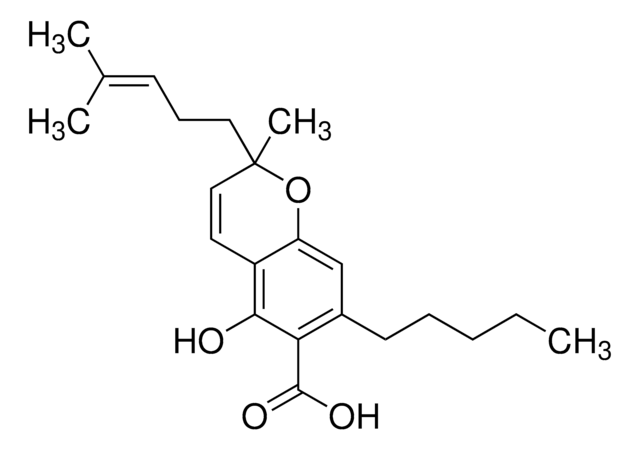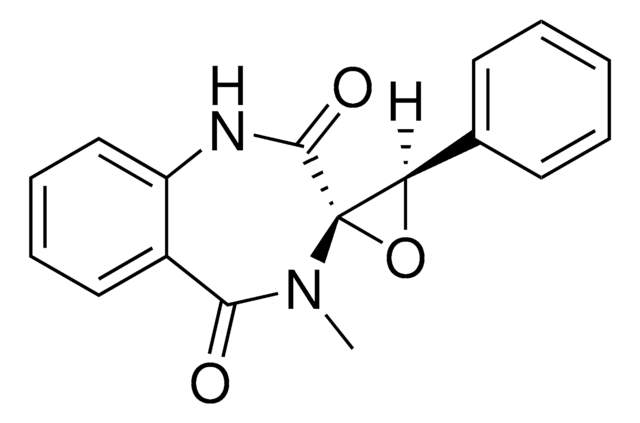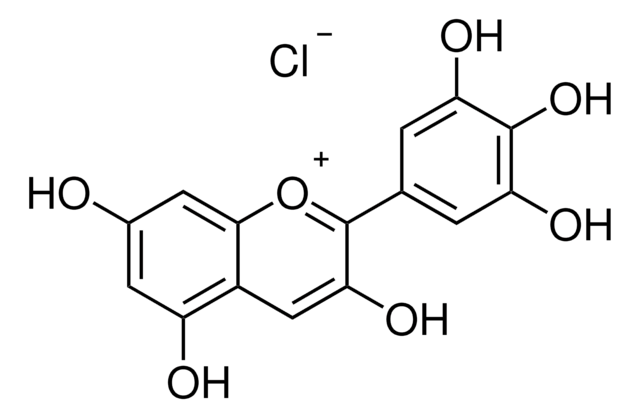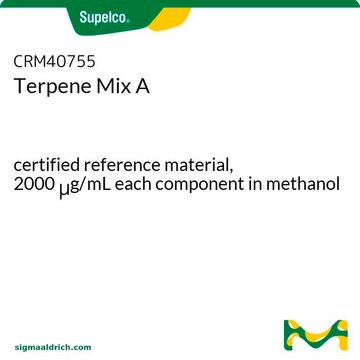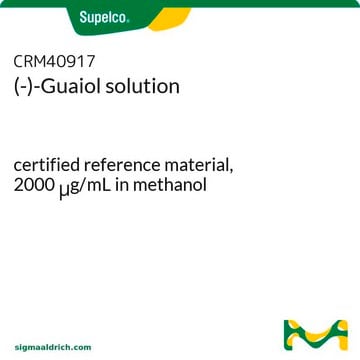SMB01004
Chrysogine
≥90% (LC/MS-ELSD)
Synonym(e):
(+)-Chrysogine, 2-[(1R)-1-hydroxyethyl]-3H-quinazolin-4-one
About This Item
Empfohlene Produkte
Biologische Quelle
plant
Assay
≥90% (LC/MS-ELSD)
Form
solid
Mol-Gew.
190.2
Anwendung(en)
metabolomics
vitamins, nutraceuticals, and natural products
Lagertemp.
−20°C
InChI
1S/C10H10N2O2/c1-6(13)9-11-8-5-3-2-4-7(8)10(14)12-9/h2-6,13H,1H3,(H,11,12,14)
InChIKey
BMBSGGZMJQTQSO-UHFFFAOYSA-N
Verwandte Kategorien
Allgemeine Beschreibung
Anwendung
Leistungsmerkmale und Vorteile
- High quality compound suitable for multiple research applications
- Compatible with HPLC and mass spectrometry techniques
Sonstige Hinweise
Lagerklassenschlüssel
11 - Combustible Solids
WGK
WGK 3
Flammpunkt (°F)
Not applicable
Flammpunkt (°C)
Not applicable
Analysenzertifikate (COA)
Suchen Sie nach Analysenzertifikate (COA), indem Sie die Lot-/Chargennummer des Produkts eingeben. Lot- und Chargennummern sind auf dem Produktetikett hinter den Wörtern ‘Lot’ oder ‘Batch’ (Lot oder Charge) zu finden.
Besitzen Sie dieses Produkt bereits?
In der Dokumentenbibliothek finden Sie die Dokumentation zu den Produkten, die Sie kürzlich erworben haben.
Unser Team von Wissenschaftlern verfügt über Erfahrung in allen Forschungsbereichen einschließlich Life Science, Materialwissenschaften, chemischer Synthese, Chromatographie, Analytik und vielen mehr..
Setzen Sie sich mit dem technischen Dienst in Verbindung.
